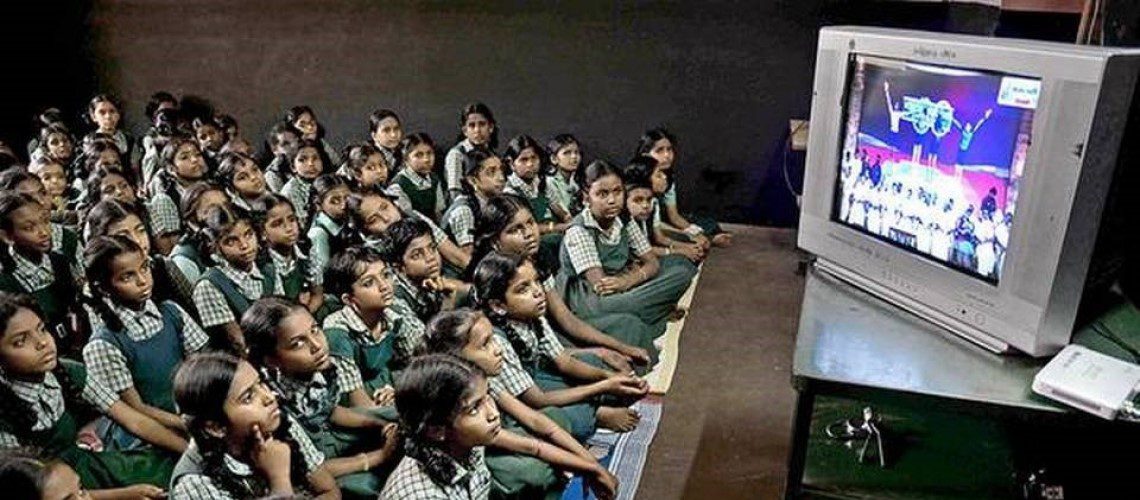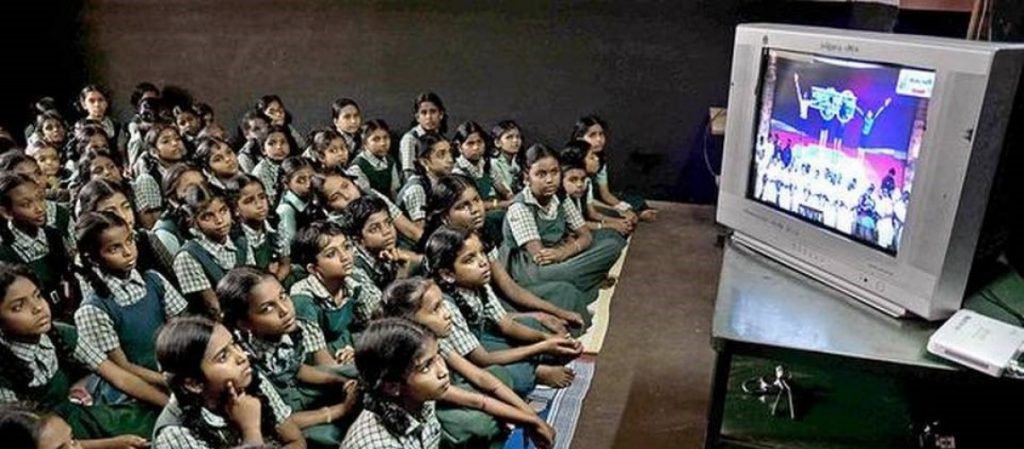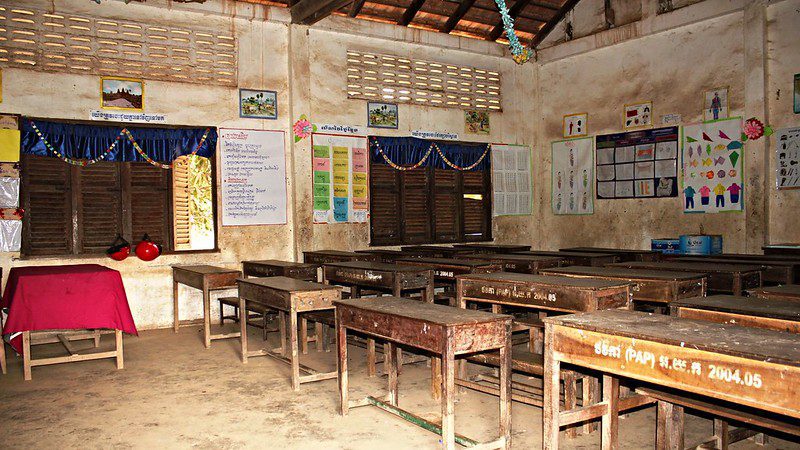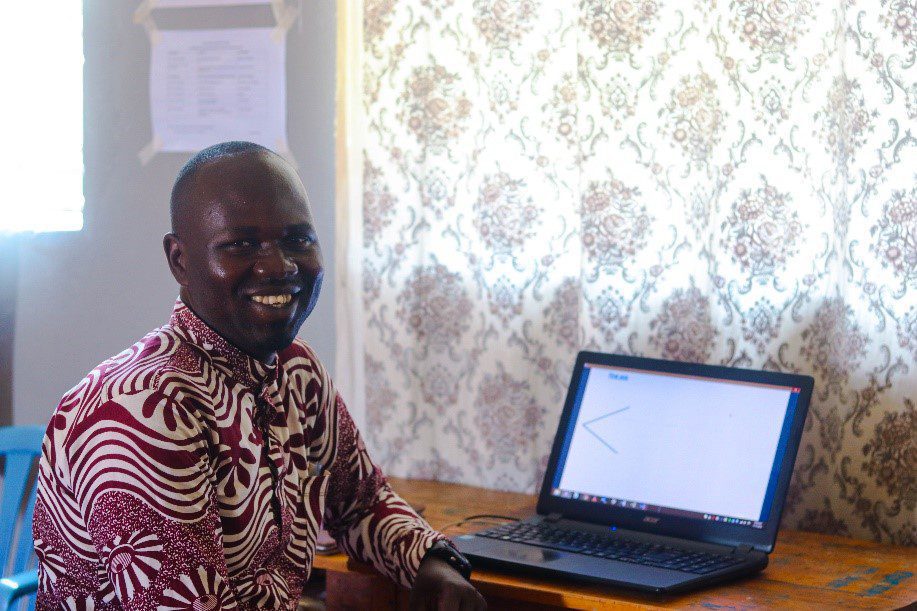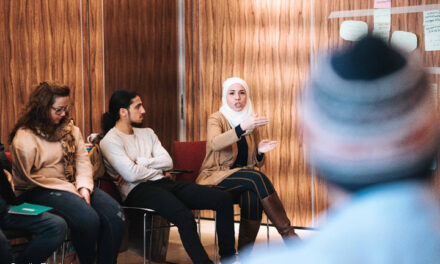This blog was written by Sharon Zacharia and Alex Twinomugisha, core members of the World Bank’s Global EdTech team. It was originally published on the World Bank Blogs site on 24 April 2020.
Countries around the world have responded to coronavirus (COVID19) driven school closures by adopting remote learning approaches, with many deploying online learning programs. However, online learning has exposed deep digital divides between and within countries, including high-income countries. The situation is far worse for lower resource environments in middle- and- low-income countries with Internet penetration rates typically less than 50% and a large share of students without devices to enable online learning at home. Countries are therefore turning to television to significantly increase access to remote learning.
Low- and middle-income countries have been using education television since the 1950s including interactive television lessons more recently. The World Bank’s EdTech team has catalogued examples of education television being used by countries during COVID-19 and has developed a rapid response guidance note on using educational television programming during school closures. This blog summarizes five key insights on starting, using and sustaining education television for remote learning, corroborated by more than 40 current examples from countries.
Five key things to get started
- Use a mix of live broadcasts, pre-recorded (on demand) content and edutainment programs.
Broadcasting live lessons in mock classroom settings is the fastest way to get started for countries with limited or no education television experience (e.g. Morocco, Spain, South Africa). Broadcasting existing pre-recorded material (possibly available as on-demand content) from private and non-profit organisations (e.g. Khan Academy) is a useful option for countries with existing educational television programs (e.g. Croatia, Spain). Edutainment programs that provide education in the form of entertainment is another useful source for programming. Developing these as a short-term response to COVID-19 is not advised. Instead, consider sourcing, curating and obtaining intellectual property rights for existing content from local or international sources (e.g. Ubongo used in 33 African countries, Sesame Workshop used in 40 countries).
- Identify channels for broadcasting programs.
Some countries have existing national education television networks with a wide reach. For those without this, partnering with state television networks is a quick-start solution. Morocco’s national channel dedicated to sports is now being used to broadcast educational television as well. Partnering with private broadcasters can further amplify the reach of this programming across communities and allow simultaneous broadcasts for students across grade levels (e.g. Mexico). Rebroadcasted content is another way to amplify its reach using livestreaming or as on-demand content (e.g. Kenya uses YouTube, Pakistan uses an app).
- Develop schedules for educational television programming.
Broadcast schedules must clarify where and when such broadcasting can be accessed. Some countries are providing student-friendly daily and weekly schedules on their education ministry’s website (e.g. Mongolia), some on their education television network websites (e.g. China, India) and some on institutional websites (e.g. Kenya).
- Develop a communication strategy and communicate regularly.
Continuously communicating during this period is pivotal to the success of such programming. Communicate before launching the programming (e.g. Brazil, West Bank and Gaza). To amplify awareness, communicate schedules continuously and widely using every available media including television, radio, mobile phone via text messages or WhatsApp (e.g. Peru), social media like Facebook (e.g. Rwanda) and websites of education ministries and education television networks (e.g. Korea). Organizing all programming related resources in one place makes it easier to access them and increases uptake. This can be done on the education ministry website, national television network website, etc. (e.g. India, Nigeria, Uganda).
- Provide support for students, parents and educators.
Throughout this programming, students, parents/caregivers and educators will require technical support (e.g. toll-free helplines or low cost chatbots can be employed), pedagogical support and socio-emotional support (e.g. Spain). Teachers can be mobilized to provide this (e.g. China). Education television can be made more interactive by answering questions during lessons. Questions can be collected by phone calls, text messages, email or social media, and answered during live lesson recordings. Keep multiple communication channels open (e.g. Jamaica has 36 helplines) and encourage feedback to improve the programming (e.g. China, Russia).
Five additional things to consider
- Connect and learn from other countries. These can be countries with a history of using educational television (eg. Brazil, China, Ethiopia, Ghana, India, Mexico) or have longer experiences using television to respond to school closures (e.g. Korea).
- Content used during COVID-19 closures can be reused when schools reopen and to reach out-of-school children. Video has one great advantage – students can review the content multiple times, thereby possibly increasing its effectiveness. Archive all the education television programming on online platforms (e.g. education television website, YouTube) and reuse them for regular school lessons and to reach out-of-school children (eg. Mexico).
- Compliment television with expanded access to the Internet and devices. This can amplify the reach, impact and effectiveness of this television programming as well as related communication including, program schedules and support. This is possible even with limited Internet connectivity (e.g. text messages, WhatsApp) and simple devices. Access to digital platforms that host this education programming can be zero-rated (eg. Ghana, Korea, Qatar). Partner with Internet service providers to provide free internet access to online learning platforms (e.g. Kenya, Rwanda, Nigeria). Ministries and schools can loan out devices to students (e.g. Saudi Arabia).
- Consider supplementary actions like text messages and print material. Supplementing television programming using print material like workbooks, written homework or newspaper-based activities can improve its effectiveness (e.g. Bangladesh). Text-messages can be used to ‘nudge’ parents/caregivers, students and educators with reminders to – use this programming, share feedback or adopt ‘good practices’ that supplement the effectiveness of this programming. Note that too much nudging can defeat the purpose.
- Consider diversity, equity and inclusion. Varied expertise can add diversity to this programming, say, by bringing in musicians, chefs or photographers to support teachers in providing real-life lessons to students (e.g. Argentina). Inclusiveness can be achieved through lesson presenters being women as well as men, teachers with handicaps or people from different ethnic/cultural groups.
Special thanks to Michael Trucano, Robert Hawkins, Cristóbal Cobo and Iñaki Sánchez for their feedback and resources.

